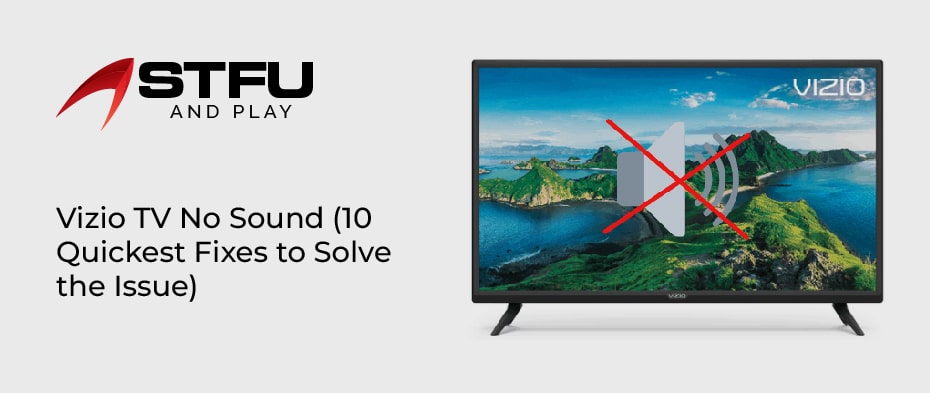Have you encountered frustrating audio issues with your Vizio TV, leaving you in a silent viewing experience? Don't worry; you're not alone! Sound problems are common among Vizio TVs, but the good news is that most of these issues can be resolved with simple troubleshooting steps.

Image: www.istartips.com
Troubleshooting Basic Sound Issues
Before delving into complex troubleshooting techniques, let's address some basic audio problems that can be easily fixed:
Check the Volume Settings
It may sound obvious, but make sure the volume on your TV isn't muted or set to a low level. Check the physical volume buttons on the TV or remote control, or adjust the volume setting through the TV's menu.
Restart Your TV
A quick and effective solution is to restart your Vizio TV. Unplug it from the power outlet, wait for a few minutes, and then plug it back in. This simple step can often resolve minor software glitches that may cause sound issues.

Image: www.stfuandplay.com
Advanced Troubleshooting for Specific Sound Problems
If the basic troubleshooting methods don't resolve your sound problem, here are some more specific issues you may be facing and their solutions:
No Sound from TV Speakers
If you're not getting any sound from the built-in speakers of your Vizio TV, try the following:
- Make sure the speakers aren't disabled in the TV's audio settings.
- Check the connections of any external devices, such as soundbars or headphones.
- Reset the TV to its factory settings, which can resolve software-related issues.
Sound is Muffled or Distorted
If the sound from your Vizio TV is muffled or distorted, it could be caused by:
- Damaged speakers: Contact Vizio or a qualified technician for repairs.
- Interference from other devices: Move wireless devices away from the TV and check for any potential sources of electromagnetic interference, such as power lines or appliances.
- Audio settings: Adjust the audio equalizer settings in the TV's menu to improve sound quality.
Sound is Out of Sync
If the audio on your Vizio TV is out of sync with the video, it can be frustrating. To fix this, try:
- Adjust the audio delay settings: In the TV's audio menu, adjust the audio delay setting to synchronize the audio and video.
- Check your HDMI cables: Ensure your HDMI cables are high-quality and securely connected to both your TV and audio device.
- Update the TV software: Check for any available software updates for your Vizio TV, which can resolve audio synchronization issues.
Expert Tips and Advice
In addition to the troubleshooting steps mentioned above, here are some expert tips to improve the sound quality of your Vizio TV:
- Enable Surround Sound: If your TV supports surround sound, enable it in the audio settings to create a more immersive audio experience.
- Use an External Soundbar or Speaker System: For enhanced sound quality, consider connecting an external soundbar or speaker system to your Vizio TV.
- Frequently Update TV Software: Regular software updates can address audio issues and improve the overall performance of your Vizio TV.
Frequently Asked Questions (FAQs)
Q: How do I know if my Vizio TV speakers are damaged?
A: If you hear crackling or popping sounds, distorted audio, or no sound at all, your speakers may be damaged.
Q: What should I do if restarting my TV doesn't resolve the sound issue?
A: Try resetting the TV to its factory settings, update the software, or check for potential interference from other devices.
Q: Can I adjust the audio equalizer settings on my Vizio TV?
A: Yes, most Vizio TVs allow you to adjust the audio equalizer settings to customize the sound quality to your preference.
How To Fix Sound On Vizio Tv
Conclusion
Fixing sound issues on your Vizio TV can be straightforward by following the troubleshooting steps and tips provided in this blog post. Whether you're experiencing muffled sound, out-of-sync audio, or no sound at all, these solutions will guide you toward a satisfying viewing experience.
Are you interested in learning more about Vizio TV troubleshooting or other tech-related topics? Drop a comment below, and let’s engage in a discussion!